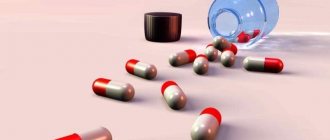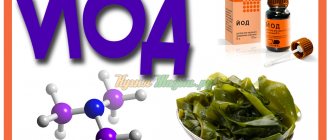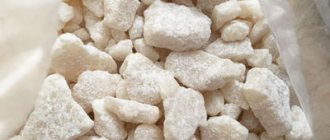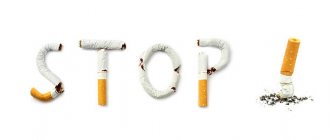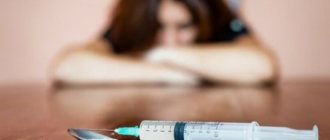When living in today's polymer world, a person is constantly in contact with chemistry, which often leads to intoxication. For example, formaldehyde poisoning, contact with which is inevitable in everyday life.
Formaldehyde (also known as methanal, otherwise called formic aldehyde) is a pungent-smelling, colorless gas, highly soluble in alcohols and water.
In many industries, formaldehyde (an aqueous solution of formaldehyde), a denaturing protein that has tanning properties, is more often used:
- woodworking (resins, as part of furniture materials),
- in the production of photographic and film films,
- in leatherworking (as a tanning agent),
- in paints, textiles, plastics,
- in cosmetology (deodorants, shampoos, nail polishes, etc.),
- in medicine (antiseptics),
- to extend the shelf life of products (emulsifier E240),
- in anatomy as a preservative for biological products.
Formaldehyde is listed as a carcinogen. The lethal dose of its aqueous solution is 10–50 g.
Field of application of formaldehyde
Formalin is an aqueous solution that contains 40% formaldehyde, as well as 8% technical alcohol as a stabilizer. It is impossible to identify it by appearance because it is colorless and transparent. The easiest way to recognize it is by its characteristic suffocating smell. This substance is used as a source of formaldehyde and methylene derivatives.
Urea-formaldehyde resins are produced from formaldehyde, which are used in the woodworking industry for the production of plywood and other materials, as well as in the furniture industry. This substance can be found in plastics, pharmaceuticals, and organic dyes.
Tanned gelatin is used in various industries. It is essential for making film, strengthening textiles, and tanning leather. Formalin is excellent for this because it has the ability to coagulate proteins, which is how gelatin is tanned.
Formalin can be included in disinfectants and embalming agents, cosmetics, household chemicals, and medicines.
Preventive measures
As a preventive measure, you need to know the safety rules and follow them. To do this, air ventilation is provided in industrial premises or at home, smoking is prohibited inside the building, and personal protective equipment is required. At home, for the first time after purchasing new furniture or flooring, it is worthwhile to regularly ventilate until there is no specific smell.
Formaldehyde injuries have serious consequences, and not everyone can be treated. To avoid consequences, you need to know preventive precautions. You should not buy a product containing formaldehyde. New items must be washed before wearing. Open windows indoors more often, because... There may be an odor coming from furniture or other objects. Do not purchase furniture without a quality certificate. Regularly wipe the floors, cabinets and cabinets in the living space, and arrange ventilation. Plant plants that absorb toxins from the air. When purchasing food, you should pay attention to the smell.
Nowadays, it is impossible to eliminate formaldehyde from everyday life, so it is worth limiting and protecting yourself and your loved ones from unnecessary contact with harmful substances.
How does formaldehyde poisoning occur?
Formaldehyde is a toxic substance. It has a strong irritating and cauterizing effect on tissues and mucous membranes. Once in the body, this substance reacts with the blood, oxidizes and turns into formic acid. This puts a lot of stress on the kidneys and can lead to kidney failure. This substance is removed from the body slowly.
Formalin
For the human body, formaldehyde poisoning is also dangerous because this substance has carcinogenic and mutagenic effects. It has a negative effect on the brain and nerve tissue due to the fact that it provokes a lack of ATP molecules in the body.
The drug negatively affects the gastrointestinal tract.
Another feature of formaldehyde is that it quickly spreads throughout the body. Once in the esophagus, it takes only 12 hours to penetrate the bone marrow. It is important for the victim to begin treatment as soon as possible.
How to protect yourself from furniture made of chipboard and MDF?
What to do with such furniture and how to reduce the evaporation of formaldehyde and other hazardous substances?
- Apply several layers of glue, varnish or paint to all unprotected surfaces of the furniture (including back walls). Use water-dispersed paint as paint: it does not contain toxic substances and will create a protective film.
- PVC edging can also be used as a protective substance.
- Tables, cabinets, etc. Interior items can be covered with self-adhesive film or covered with natural materials. This will significantly reduce the amount of toxic fumes.
- Immediately cover all damage to furniture (scratches, chips, etc.) with a protective substance (see point 1).
- If possible, place furniture away from radiators and other heating devices.
- Ventilate the room as often as possible and control air humidity.
Children's furniture laminated chipboard - you can hear many conflicting opinions about it. Some people consider such interior items to be absolutely harmless, but for others it is synonymous with strong poison.
Children's furniture laminated chipboard
— you can hear many conflicting opinions about it. Some people consider such interior items to be absolutely harmless, but for others it is synonymous with strong poison. Modern manufacturing factories offer customers a wide range of furniture made from this particular material. In addition, its price is very attractive due to its availability. Therefore, the issue of harm to children's furniture from chipboard is worth attention.
Ways and causes of poisoning
Formaldehyde poisoning occurs in the following ways:
- if inhaled;
- if ingested;
- if the solution comes into contact with the skin.
But this does not mean that any material or substance containing formaldehyde is dangerous to humans. Some personal care products, household chemicals, medications, and even food products require formaldehyde in order for them to maintain their properties and perform their stated functions. Intoxication of the body occurs through direct contact with this substance, when its concentration is too high and if you breathe formaldehyde vapor. Items that contain dangerous concentrations have a strong, characteristic odor of formaldehyde.
Consequences
Unfortunately, it is almost impossible to be poisoned by formaldehyde without consequences. After the main treatment of poisoning, as a rule, complications always have to be treated, and sometimes for quite a long time.
Formaldehyde poisoning can lead to:
- liver or kidney failure (the result is chronic diseases of these organs and their lifelong treatment),
- loss of vision,
- changes and disorders of reproductive function,
- altered genetic material
- disorders of the respiratory and nervous systems,
- residual problems in internal organs affected by poisoning,
- oncological diseases,
- fatal outcome.
Every consequence of such poisoning is very serious, but not every one is curable. Therefore, as always, there is no escape without preventive measures. They will help to at least somewhat reduce the likelihood of intoxication and its severe consequences.
Have you ever had formaldehyde poisoning?
- Yes it was
- No, it was not
- Now there are symptoms of intoxication
ResultsPoll Options are limited because JavaScript is disabled in your browser.
- No, it wasn’t 58%, 173 votes 173 votes 58% 173 votes - 58% of all votes
- Yes, it was 24%, 73 votes 73 votes 24% 73 votes - 24% of all votes
- Now there are symptoms of intoxication 18%, 53 votes 53 votes 18% 53 votes - 18% of all votes
Total votes: 299 09/20/2017 You or from your IP have already voted.
- Yes it was
- No, it was not
- Now there are symptoms of intoxication
You or from your IP have already voted. results
Sources of intoxication and permissible limit
The upper limit of the maximum permissible concentration (MAC) of formaldehyde in the external environment is 0.5 mg/m³. This amount of substance is not capable of harming the human body. But with more severe intoxication, poisoning occurs. The lethal dose is 10-50 g of formalin solution or 60-90 ml of a gaseous substance.
You can get poisoned:
- smog, exhaust fumes, smoke from the fireplace;
- tobacco products;
- cosmetics, most often nail polish;
- household chemicals;
- glue;
- pharmaceuticals;
- fumes from furniture made of MDF, chipboard, plywood;
- fumes from carpets;
- fertilizers for plants.
Symptoms and signs of poisoning
There are two types of toxic substance intoxication:
- Acute intoxication occurs when a large amount of toxin enters the body over a short period of time.
- Chronic intoxication occurs when small doses of formaldehyde enter the body over a long period of time.
Signs of acute inhalation poisoning with this poison:
- cramps and swelling of the legs;
- difficulty breathing, pulmonary edema;
- irritation of the mucous membrane of the eyes and nasopharynx;
- coughing;
- dizziness;
- poor coordination of movements;
- severe anxiety and worry.
Acute laryngeal edema
Signs of acute oral poisoning with this poison:
- vomiting blood;
- diarrhea;
- pain and burning in the mouth and throat;
- swelling of the larynx.
Signs of chronic formaldehyde poisoning:
- severe and prolonged headaches;
- chronic weakness and fatigue;
- pallor of the skin and mucous membranes;
- sudden weight loss;
- sudden changes in mood from euphoria to apathy and depression;
- bronchial asthma;
- insomnia;
- convulsions.
If formaldehyde gets on the skin, dermatitis appears on the affected area, which over time can develop into eczema, and sweating problems also occur.
With any form of poisoning, allergic reactions may occur.
Complications
Within 20-40 minutes after poisoning, the victim's condition may deteriorate significantly. We are talking about complications such as:
- Toxic hepatitis and acute liver failure. In this condition, pain appears in the right hypochondrium, the mucous membranes and skin turn yellow, and consciousness is impaired. All this is accompanied by black, loose stools and dark vomit. The color of the skin also changes - it becomes pale.
- Swelling of the mucous membrane of the larynx and lungs. The result may be suffocation.
- Gastrointestinal bleeding. It develops due to the fact that the vascular walls of the duodenum and the submucosal layer of the stomach are corroded by the chemical.
First aid and treatment for formaldehyde poisoning
First aid measures for the victim depend on how formaldehyde entered the body.
In case of inhalation poisoning, the first thing to do is remove the victim to fresh air. Ammonia helps neutralize the effect of formaldehyde. These substances react and form methenamine, a non-toxic compound for humans. Therefore, a few drops of ammonia should be poured onto cotton wool and passed under the victim’s nose.
To relieve pain from the eyes, you should rinse them thoroughly under running water, and then drip a few drops of Novocaine 0.5% solution into each conjunctival sac. If a person has difficulty breathing, he needs to be administered respiratory analeptics - Lobelin or Cititon. If nervous excitement is observed, taking tranquilizers - Seduxen, Sibazon or their analogs is indicated.
Ammonia-anise drops
In case of oral poisoning, in no case should you immediately rinse the stomach with water or other liquids. This can only be done to the victim by doctors in a hospital using a thick probe. Until this point, just drink a lot of clean water. You can additionally take ammonia-anise drops.
If the substance gets on the skin, rinse the affected area with plenty of water and wipe with a cloth soaked in ammonia.
Poisoning with this toxin is severe and causes severe pain to the victim. Therefore, it is necessary to start treatment as early as possible. As soon as signs of poisoning of any type are noticed in a person, it is necessary to call an ambulance.
When is hospitalization carried out?
If the patient's condition has deteriorated significantly, he may be taken to the toxicology department or intensive care unit.
Treatment, which is carried out in a hospital setting, includes the following stages:
- The antidote formalin is administered. This is three percent ammonium chloride or carbonate. The purpose of this procedure is to neutralize the effects of formalin.
- Purify the blood if the kidneys have been damaged.
- Drugs are administered that normalize the heart rhythm.
- Gastrointestinal bleeding is stopped if it is detected.
- Droppers are placed to provide forced diuresis. Increasing the volume of urine produced allows the chemical to be eliminated from the body faster, provided that kidney function has been preserved.
Treatment and examination of the patient in the hospital are carried out in parallel. Electrocardiogram, ultrasound, general urinalysis and blood biochemistry are used as diagnostic measures.
